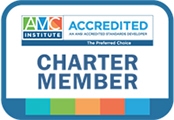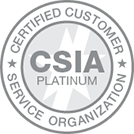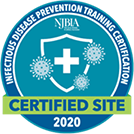
An association is a busy entity with a ton of pressing matters at hand—you have to do everything from engaging on social media to planning an annual conference, and that entails creating scores of emails, exhibitor prospectuses, and more. With so many projects and activities to manage, and so many people involved in each of them, you may neglect to verify that the colors in a program guide align with the logo or to ensure that the voice of the latest membership email is on point.
This is where a branding guide comes in handy.
WHAT CAN A BRANDING GUIDE DO FOR YOU?
A branding guide provides a set of regulations to follow for your brand’s look and feel. At first blush, creating one may seem like an unnecessary burden on your already busy schedule. But if you take the time to clearly establish your brand’s appearance now, you’ll reap the rewards in spades in the long run. When associations don’t have a branding guide, the absence of a clear directive about things like font choice and logo placement can create a back-and-forth that costs them a lot of money and time, says Taramin Stuber, a graphic designer at AH who creates and uses branding guides for client partners. As a designer, she says, it’s helpful to know what an organization’s preferences are so that the basic elements of any given project will be correct from the get-go.
The presence of a branding guide can also improve your messaging by streamlining it and making it more consistent. “As long as you have a brand documented and everyone in the organization knows how to use it, then you’re always going to be recognized in the way you want to be,” says Karli Horn, the marketing manager for AH. “If you always want to be represented by a certain red, yellow, and blue, but someone

comes across your organization sponsoring an event where your logo has been changed to purple, it dilutes your brand and takes away from the continuity and consistency.”
Due to the number of people who might be involved at an association, this type of brand dilution can happen fairly easily. “If volunteers or freelancers are working on something, haven’t seen previous materials and don’t have a branding guide to reference, the brand gets really out of control and sometimes unrecognizable,” Stuber says. A guide, however, gives everyone from website designers to event planners a clear, consistent reference for their work.
GETTING STARTED ON DOCUMENTATION
You might be tempted to just throw something together based on a quick review of some past materials but that isn’t an ideal long-term solution, says Horn. If you do that, “it’s not going to stick. It’s not going to be something people have ingrained in their brains. It’s not going to be a consistent tone and voice if it’s not documented.” Instead, Horn recommends starting with some research on your marketing history to see what you’ve done in the past. Then, have a committee meeting to share ideas and establish specific guidelines. Through the process of creating a guide, suggesting edits, making changes, and granting approvals, you’ll establish a well thought-out visual representation of your brand. The process for building a branding guide, Horn says, is the same as that for building a brand.
Tweet This: The presence of a branding guide can improve your messaging by streamlining it and making it more consistent. https://ctt.ec/td9A7+
ELEMENTS OF A BRANDING GUIDE
So what exactly are the specifications your branding guide committee needs to discuss? There are several, but they all focus on look and tone. “It’s nice to get a full idea of what the brand should look like so we know what they want,” Stuber says. The absolutely essential items that should be included in any branding guide are a logo, a primary color palette, and two fonts. But to more fully represent your brand, you should include as many of the following elements as possible:
Voice
Specifying the details of your voice allows your association to convey a consistent message, Horn says.
- Possible aspects to incorporate are your mission statement, vision, core values, taglines, and corporate identity.
- This can provide readily accessible copy when designing a new page for your website, creating a brochure, or preparing a program for your annual conference.
Logo
“You want your logo itself to represent the demographic,” Stuber says. “It should have colors that represent your identity.”
- Include images of the logo in full color and, if applicable, in black and white.
- Include any do’s and don’ts of placement: Should there be a safety area around the image? Is it important that the image never appear behind text or be stretched to fit a space?
Colors
“Something I wouldn’t go without is a color palette,” Horn says. Including three sets of colors (for a total of 10 to 12 hues) will give you the flexibility to create dynamic designs.
- The core color palette is the colors used in your logo.
- The secondary color palette can be used in your brochures, on your website, and in any other marketing materials.
- The tertiary color palette is different shades of your primary and secondary color palettes, allowing you to give your brand some visual finesse.
Images
If your association regularly uses visuals in your marketing materials, include some information about your preferred style.
- Do you prefer original photographs, illustrations, or stock photography?
- If you are providing any images via the branding guide (or elsewhere), ensure that either you have the rights to use them or they are in the public domain.
Fonts
You should include at least two different types of fonts. “One font gets really hard to design with, because it gets really boring,” Stuber says. Having at least two fonts to work with adds depth to your materials and gives designers options to keep designs interesting.
- Specify when each font can be used.
- Remember to include standards for webbased
formatting.
Proper Style
A brief overview of your preferred style can save a lot of time down the road. “This is good for any organization to have, especially when you use a lot of acronyms,” says Horn. “Words that are used often and that are also used in different forms (for example, ‘non-profit’ and ‘nonprofit’) should be part of a writing guide so that everyone is using the same style.”
- Give examples of how to properly format your association’s mailing address and any other standard information.
- Also include the correct formatting of credentials (“Ph.D.” versus “PhD,” for example) and position titles.

Now, you may not have everything on this list at your fingertips, and that’s OK. “You can go forward without certain pieces,” Horn says. “It depends on what your organization does and what it wants to be.” If you don’t have a tagline, ask yourself whether you need one—and if the answer is yes, by all means, put on your thinking cap and come up with something that speaks to the essence of your association’s brand. But if that’s not something you need, don’t sweat it. Make your branding guide work for you.
Tweet This: As long as you have a brand documented & everyone knows how to use it, you'll be recognized the way you want to be. https://ctt.ec/dcq0l+
Great! Now you have a branding guide. What do you do with it?
First, give yourself a big pat on the back. Creating materials will be a much simpler process from here on out! Next, follow your branding guide in everything you create—including making sure your branding guide follows its own rules.
Then it’s time to distribute the guide to everyone in your association who might need to use it, including staff, volunteers, and freelancers. Include a cover sheet for people to sign acknowledging that they’ve reviewed it and will implement it going forward. And if you work with any vendors as you prepare for trade shows, update your website, or otherwise create signs or materials, make sure they have it for reference.
Applying a cohesive look to your brand will make your presentations of all kinds look more beautiful, Stuber says. You may also need to update past materials, including your website, busine
ss cards, letterhead, email signatures, promotional products, and other assets. “Figure out where your brand sits and what needs to be updated and what is okay to stay the way it is depending on what you’ve done,” Horn says.
Tweet This: Follow your branding guide in everything you create—including making sure your branding guide follows its own rules. https://ctt.ec/9aXOe+
Finally, remember that the branding guide needs to stay current. If something changes—your color palette, your address, your preferred fonts—be sure to update the branding guide and make sure everyone knows what changed. But for now, you can just enjoy the simplicity of knowing exactly how your association’s brand should be represented to the world.





